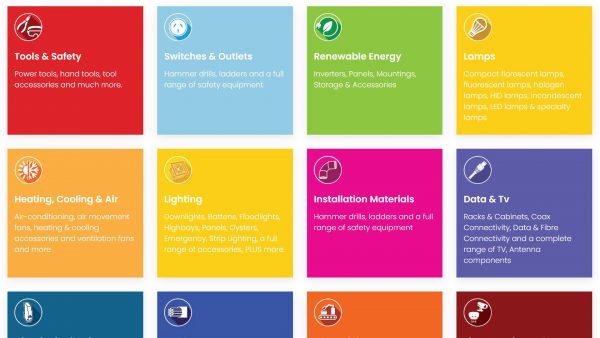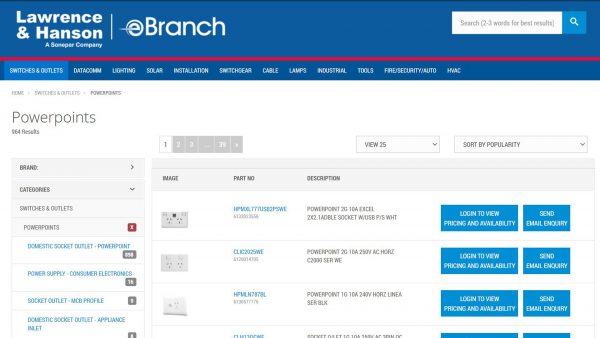
Lighting
LIGHTING THE WAY TO SIGNIFICANT SAVINGS
As you’re probably aware, shifting an existing commercial lighting system to LED can lead to considerable cost savings. An LED bulb is up to 90% more efficient than an incandescent globe, it lasts for up to 50,000 hours and significantly reduces harmful CO2 emissions.
However, the incorporation of LED technology into a workspace is more than just a way of slashing bills – it’s a bold statement by the company about how it views the future. It shows that a business is considering the big picture – it cares about the efficiency of the company and it is conscious of the environment that we live in.
One property that realised this was the Melbourne Central Tower (MCT). It’s been an iconic structure in our eyeshot for the best part of 25 years and it’s pretty hard to miss, flaunting 46 floors, enough parking for 850 cars and two city-blocks-worth of retail space.
The building now boasts a low wattage, low cost LED system thanks to a collaboration with Specialised Lighting Solutions (SLS). The team at SLS were able to identify inefficiencies within the building and use LED technology to combat the problems. One example of this was the building’s ‘cleaner stations’. It was found that these were often left unnecessarily illuminated after cleaners had vacated. To eradicate this, SLS proposed the inclusion of sensor technology, in the shape of its Chamaeleon fittings. This technology features a microwave motion sensor, an LED light source, and a low energy standby mode (which results in a 93% reduction in energy use). Because of this, the fittings are ideal for use in low-consumption areas such as car parks, fire stairs and service corridors. In this situation, the team were able to ensure that lighting was only activated when it was actually being used.
For other, higher-use areas, such as the foyer and lift lobbies, SLS recommended the use of 32W LED downlights, due to their adaptability and efficiency.
Corsina Aquilina, the operations supervisor for MCT’s building management team says she couldn’t be happier with the project, “The SLS system has delivered a low-wattage LED option with the same effect as traditional light sources, but at a fraction of the running cost.”
Fit for retrofit
A common concern for many building managers is that installing LED lighting will cause disruption to operations and require the removal of existing systems. However, this doesn’t have to be a hindrance, as the recent retrofit Energy Conservation Project (ECP) at the Country Court of Victoria proved.
The court’s facilities team asked for a trial of energy efficient LED products within its existing conventional lighting system. The team at SLS installed a mix of 100 fittings, which included LED tubes, troffers and downlights, which equated to around 5% of the overall project scope. The Court immediately experienced a 46% decrease in energy consumption. Consequently, they commissioned a further 600 units. This showed a reduction of 109,276 kWh per annum (around 143 tonnes of CO2) and resulted in a saving of $13,400 per year on energy consumption in the car park alone. The project eventually progressed to the entire building which has seen significant cost savings and reduction in energy bills.
Savings that can be measured
Evidently, energy bills can be substantially reduced after shifting to LED, however it doesn’t happen overnight. After an assessment of existing energy consumption, you can receive an accurate prediction of expected savings and what the payback period will be thanks to Eco-rebate. Eco-rebate can help by providing clients with discounts through energy saving schemes to maximise their return on investment.
That’s exactly what the Chairo Christian School did before they committed to an LED upgrade. By speaking with the Eco-Audit team at SLS, the school was able to see exactly what systems would be needed in order to meet their expectations.
After assessing the school’s previous energy bills, the Eco-Audit team were able to calculate the payback period and the anticipated return on investment of the upgrade. “By using this information, we were able to estimate the savings the school would receive in lamp supply and maintenance over the project’s fifteen year lifetime,” said Joe Melilo
“Annual overall savings of $7,000 were projected along with a staggering cut of 337 tonnes of CO2 emissions. Estimated total savings for the school over fifteen years is more than $140,000.”
Now, six months into the LED upgrade, Chairo Christian School is experiencing a significant reduction in costs and is en route to meeting its target of a 50% fall in energy consumption.
How to take advantage of these savings
The first step in plotting your potential energy reduction is to consult a professional.
Eco-audit can help by guiding you from start to finish. Here’s how it works:
- Engage Eco-audit to help you with a comprehensive audit of your existing lighting application
- Eco-audit’s lighting consultants will put together a comprehensive lighting asset register
- Eco-audit will then provide you with a full turnkey lighting solutions prepared in a proposal format detailing your complete return on investment
- Eco-rebate will help to generate an energy savings certificate through the Victorian Energy Efficiency Target (VEET) and the NSW Energy Saving Scheme (ESS)


